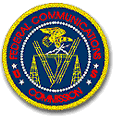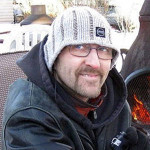Posts Tagged ‘FCC’
 Show Notes #116
Show Notes #116
Episode #116 Audio (Listen now!):
- Week-end Brushes with fame
- HamQTH Author Wants Your Feedback
- Search for Vanity Call Signs
- What’s New in Ubuntu 14.04 (Trusty Tahr)
- Ubuntu 13.10 for Smart Phones (Ubuntu Touch)
- Pete Looks for a phone
More Topics
- The Savannah Project
- List of small/medium/large ham radio projects
- Fascinating tour of the space station
- Small Wonder Labs to go QRT
- Social Media Roundup
- Google+
- Felix R.
- Peter N.
- Twitter
- @TheZerocool (Denis S.)
- Mailing List
- Adrian (2E0SDR)
- Rusty (NM1K)
- Robert (AD0BM)
- Subscriptions
- Bill A. (Monthly)
- Bill H. (Monthly)
- David L. (Yearly)
- Gary U. (Monthly)
- Jeremy H. (Monthly)
- Scott P. (Monthly)
- Robert H. (Yearly)
- Thank you to our monthly and yearly subscribers.
- Thank you to all of our listeners, live and quasi-live.
- Please check out our website: http://lhspodcast.info.
- You can reach us at info@lhspodcast.info. You can leave us voice mail at 1-909-LHS-SHOW (547-7469).
- All hatemail can go to hatemail@lhspodcast.info
- Please subscribe to the mailing list. A link is on the Web site.
- Go to CafePress and Printfection and buy some of our show merchandise. Each purchase helps out the show.
- Listen live every every other Tuesday at 8:00pm Central that would be Wednesday at 02:00z. Our recording schedule is on the Web site.
Music
- ”The Soundtrack of Our Summer” by The League from the album The Soundtrack of Your Summer, courtesy of Jamendo.
- ”Whore of Babylon” by Sons of Sin from the album Rebelations, courtesy of Jamendo.
 LHS Episode #116: O Savannah
LHS Episode #116: O Savannah
 This week in the heart-pounding, blood-stopping episode of Linux in the Ham Shack, our intrepid hosts discuss a variety of topics from call sign look-up databases to Ubuntu, freeware collaboration suites to mobile computing, and QRP kits to hosted developer platforms. As if that were not enough, there’s music, banter, a cameo by Wil Wheaton and a rocking good time. What more could you possible want?
This week in the heart-pounding, blood-stopping episode of Linux in the Ham Shack, our intrepid hosts discuss a variety of topics from call sign look-up databases to Ubuntu, freeware collaboration suites to mobile computing, and QRP kits to hosted developer platforms. As if that were not enough, there’s music, banter, a cameo by Wil Wheaton and a rocking good time. What more could you possible want?
73 de The LHS Guys
 FCC Considers Encryption on Amateur Bands
FCC Considers Encryption on Amateur Bands
 Just when things were terminally boring on the amateur radio regulatory front, the ARRL reports that “The FCC is inviting public comments on a proposal from a Massachusetts ham to amend the Part 97 Amateur Service rules to permit the encryption of certain amateur communications during emergency operations or related training exercises.” The FCC is seeking comments on the Petition for Rulemaking RM-11699, submitted by Don Rolph (AB1PH). My email and twitter feed started filling up with passionate pleas to either support this petition or to kill it.
Just when things were terminally boring on the amateur radio regulatory front, the ARRL reports that “The FCC is inviting public comments on a proposal from a Massachusetts ham to amend the Part 97 Amateur Service rules to permit the encryption of certain amateur communications during emergency operations or related training exercises.” The FCC is seeking comments on the Petition for Rulemaking RM-11699, submitted by Don Rolph (AB1PH). My email and twitter feed started filling up with passionate pleas to either support this petition or to kill it.
This idea has been around for a while but I don’t recall the FCC considering action on it. The issue is that “messages encoded for the purpose of obscuring their meaning” are prohibited by Part 97 rules for the Amateur Radio Service. (Actually, that is not completely true since an exception exists for control of stations in space and radio-controlled models.) This rule has a very important role in enabling the “self policing nature” of the amateur radio service. That is, everyone can listen to the content of all radio communications, allowing improper use of the spectrum to be exposed. (Note to self: file a petition to require encryption when using 14.313 MHz.)
This rule can be a barrier when ham radio Emcomm organizations are providing communications for served agencies (e.g., the Red Cross, fire departments, medical response, law enforcement, etc.) These served agencies do not want sensitive information passed over the radio “in the clear.” Sensitive information includes items such as medical/patient information, location of emergency responders and supplies, damage assessments, door or gate access codes, etc.
A few weeks ago, I volunteered my time to help with communications for the Black Forest wildfire here in Colorado. So count me as someone that sees emergency communications as a key part of amateur radio. (Gosh, I think Part 97 even mentions this. See Part 97.1a) I also see that the prohibition against encryption is a does get in the way during some incidents.
But I am also worried about opening the door to significant use of encryption on the ham bands. The problem with encrypted messages is that…wait for it…you can’t decode the messages. So how do we maintain that self-policing thing? The fear seems to be that if we open the door at all to encryption, it will enable virtually anyone (amateur license or not) to transmit encrypted messages for unknown and inappropriate purposes.
The challenge is to figure out what limits could be put on encrypted operation to retain the self-policing nature of ham radio while enabling more effective emergency communications. Here are some ideas:
- Limit the use of encryption to actual emergencies and training exercises. (This is already in RM-11699.)
- Require that radio transmissions are properly identified “in the clear”, with no encryption. That way if encryption is used on a regular basis, steps can be taken to investigate further. (This may already be assumed by RM-11699 but I did not see an explicit statement.)
- Require additional information to be sent in the clear with the station ID when sending encrypted messages. For example, the name of the served agency, the nature of the emergency or drill, or anything else that would help a random listener to judge whether it is an appropriate use of encryption.
- Require archiving of encrypted messages (in unencrypted form) for some period time, available for FCC inspection.
- [Added 28 June]: Avoid international regulation issues by limiting encrypted messages to US stations only.
- <insert your idea here>
Still pondering this issue…what do you think?
73, Bob K0NR
Update 1 July 2013: See the article by Bruce Perens K6BP
Update 8 July 2013: See comments by N5FDL
The ARRL says “no”.
 Show Notes #103
Show Notes #103
Episode #103 Audio (Listen Now):
Introduction:
- Pete, VE2XPL from the wAVE gUIDES podcast joins as the quasi-permanent co-host for LHS.
Announcements:
- The Dayton Hamvention is happening from May 17-19, 2013. LHS will be in the Hara Arena. Please help by donating to the cause.
- RARSfest is happening May 30, 2013 in Raliegh, NC. LHS will NOT have an ambassador at the show this year.
- CQ World Wide WPX Contest is happening March 30-31, 2013 (0000Z-2359Z) for SSB and May 25-26,2013 (0000Z-2359Z) for CW. All the normal HF bands are involved in the contest. The WPX contest is based on an award offered by CQ Magazine for working all prefixes. The contest draws thousands of entries from around the world. http://www.cqwpx.com/
- Ohio Linux Fest Call For Papers is now open: “Ohio LinuxFest is looking for talks for our 2013 event, which will be held September 13-15, 2013, in Columbus Ohio. We are looking for a variety of talks at all levels, from Beginners through Intermediate to Advanced. Any topic related to free and open source software, or to open hardware, is fair game for a talk. If you have something to say, we’d love to offer you a an opportunity to say it. Just go to http://www.ohiolinux.org/cfp and fill out the submission form.”
Topics:
- The future of VoIP
- http://venturebeat.com/2013/03/22/fcc-regulation-voip-whats-next
- http://venturebeat.com/2013/03/21/voip-wiretapping-laws
- EchoLink, AllStar Link and IRLP are VoIP services
- https://allstarlink.org
- http://echolink.org
- http://irlp.net
- Tucnak
- Multiplatform VHF/HF contest logging program. Includes all features for Multi station: networking, ON4KST chat, CW/SSB keying, radio control and more
- New version 3.17 released on March 25, 2013
- Authored by Ladislav, OK1ZIA
- http://tucnak.nagano.cz/wiki/Main_Page
- http://tucnak.nagano.cz/download.php (Download link)
- Also packaged for Debian (with repos!)
- Svxlink
- Linux EchoLink server with qtel EchoLink client
- New version 13.03 released on March 9, 2013
- Authored by Tobias, SM0SVX
- http://svxlink.sourceforge.net
- Qle
- QSO Logger and Log Editor for Linux
- No package support for Debian or RH based systems
- Perl and sqlite on the back end
- New version 0.0.35 released on March 1, 2013
- Authored by Wilbert, ZL2BSJ
- http://home.kpn.nl/w.knol18/qle/qle.html
Feedback:
- E-mail from Brad A. talking about iOS vs Maemo and the corporate/community Ubuntu status according to him.
- LHS Yearly Membership by Rubens K. Thank you!
- Gary, KE2YK, has promoted us yet again on his blog. Therefore we will promote him back.
- http://ke2yk.wordpress.com
- http://ke2yk.wordpress.com/2013/03/23/1311
Contact Info:
- Contact Russ at k5tux@lhspodcast.info or info@lhspodcast.info.
- Listen to the live stream every other Tuesday at 8:00pm Central time. Check the LHS web site for dates.
- Leave us a voice mail at 1-909-LHS-SHOW (1-909-547-7469), or record an introduction to the podcast.
- Sign up for the LHS mailing list.
- LHS merchandise is available at the Merch link on Web site.
- Check out the Badgerwear or buy one of the other LHS-branded items at PrintFection.com/lhs or Cafe Press. Thanks.
- Thanks to Dave from Gamma Leonis for the theme music.
Music:
- “14 Ghosts II” by Nine Inch Nails from the album Ghosts I-IV.
- “Discipline” by Nine Inch Nails from the album The Slip.
 LHS Episode #103: Indoorsman Meets Outdoorsman
LHS Episode #103: Indoorsman Meets Outdoorsman
 Thanks for tuning into Episode #103 of Linux in the Ham Shack. With this episode we welcome in our quasi-permanent replacement for the on-hiatus Richard. Pete, VE2XPL, hails from somewhere near Montreal in Quebec, Canada, and you can read more about him on the About Us page on this very site. In this information-filled installment, Pete and Russ discuss the FCC and other licensing bodies getting interested (perhaps too interested) in VoIP technology. They also talk about several software packages related to running ham radio loggers and an Echolink client under Linux. And then they trudge through a super, super, super, super, super long e-mail from Brad. Thanks, Brad! Keep listening, folks, you’re not going to believe what the next few episodes have in store.
Thanks for tuning into Episode #103 of Linux in the Ham Shack. With this episode we welcome in our quasi-permanent replacement for the on-hiatus Richard. Pete, VE2XPL, hails from somewhere near Montreal in Quebec, Canada, and you can read more about him on the About Us page on this very site. In this information-filled installment, Pete and Russ discuss the FCC and other licensing bodies getting interested (perhaps too interested) in VoIP technology. They also talk about several software packages related to running ham radio loggers and an Echolink client under Linux. And then they trudge through a super, super, super, super, super long e-mail from Brad. Thanks, Brad! Keep listening, folks, you’re not going to believe what the next few episodes have in store.
73 de The LHS Guys
 FCC Grants Waiver on TDMA
FCC Grants Waiver on TDMA
 From the That Took A Long Time department, the FCC granted a waiver requested by the ARRL that clarifies the rules concerning the use of TDMA (i.e., MOTOTRBO or DMR) on the ham bands. I posted on this topic way back in March 2011, so refer to that article for the background. Update: ARRL article posted here.
From the That Took A Long Time department, the FCC granted a waiver requested by the ARRL that clarifies the rules concerning the use of TDMA (i.e., MOTOTRBO or DMR) on the ham bands. I posted on this topic way back in March 2011, so refer to that article for the background. Update: ARRL article posted here.
I was surprised to find that the FCC quoted my comments that I filed on this proceeding:
Some commenters state the proposed rule change “removes an ambiguity in Part 97 concerning the use of single slot TDMA technology” and it “enable[s] and encourage[s] the adoption of spectrally efficient narrowband technology.” Comments of Robert Witte at 1.
OK, fine, it was buried in the footnotes but I appreciate the mention. I can now die in peace knowing that my name is in the FCC record and not associated with a rules violation ![]()
Thanks to Jeff K0RM, for pointing this out.
73, Bob K0NR
 How to Get a $10,000 FCC Fine
How to Get a $10,000 FCC Fine
 The ARRL web site reported on this Notice of Apparent Liability for Forfeiture from the FCC. That’s government talk for “we are fining you.”
The ARRL web site reported on this Notice of Apparent Liability for Forfeiture from the FCC. That’s government talk for “we are fining you.”
In case you are wondering how you can get fined by the FCC, here’s the sequence of events that resulted in a $10,000 fine for this person:
- Get a Technician License and then let it expire.
- Repeatedly transmit on 14.312 MHz, interfering with licensed radio amateurs.
- Have FCC agents track the signal to your house
- When the FCC agents enter your house to inspect your radio station, leave the transmitter sitting on 14.311 MHz.
- Tell the FCC agents that you will remove the microphone from the transmitter and only use it as a receiver.
Hmmm, why does 14.312 MHz sound like a familiar frequency? ![]()
73, Bob K0NR












